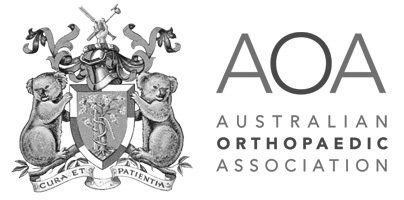Treatment for Frozen Shoulder
Nonsurgical Treatments can include:
Frozen shoulder generally improves over time, however it can take up to 3 years. If symptoms are not relieved by therapy and medication, Surgery may be required.
- Non-steroidal anti-inflammatory medication
- Steroid injections
- Physical therapy
Frozen Shoulder Surgery
Surgery for frozen shoulder involves cutting the tight ligaments and capsule and remove the scar tissue from the affected shoulder.
It can be performed with an arthroscope or with an open technique (larger incision). The primary advantage of arthroscopic technique is a shorter recovery time.
Minimally Invasive Shoulder Surgery
Frozen Shoulder surgery can now be performed arthroscopically, depending on the patient’s particular situation, with much smaller incisions. Occasionally, however, arthroscopic surgery may need to be converted to open surgery to properly repair the damage to internal structures.
Two or three small incisions(portals) are made. Each incision is called a portal.
In one portal, the arthroscope is inserted to view the shoulder joint. Along with the arthroscope, a sterile solution is pumped to the joint which expands the shoulder joint, giving the surgeon a clear view and room to work.
With the images from the arthroscope as a guide, the surgeon can look for any pathology or anomaly. The large image on the television screen allows the surgeon to see the joint directly and to determine the extent of the injuries, and then perform the particular surgical procedure, if necessary.
This may involve repairing a tear in the labrum as well as tightening the capsule and ligaments.
After stabilising the shoulder, the portals (incisions) are closed by suturing or by tape.
What if Frozen Shoulder is Untreated?
- Short Term Impact – lack or arm mobility
- Long Term Impact – continued arm mobility and recurring instances of Frozen Shoulder
What are the Risks of Frozen Shoulder Surgery?
As with any major surgery there are potential risks involved. The decision to proceed with the surgery is made because the advantages of surgery outweigh the potential disadvantages.
It is important that the patient is informed of these risks before the surgery takes place.
Complications can be medical (general) or specific to Shoulder Resurfacing surgery.
Medical complications include those of the anesthetic and your general well being. Almost any medical condition can occur so this list is not complete. Complications include:
- Allergic reactions to medications
- Blood loss requiring transfusion with its low risk of disease transmission
- Heart attacks, strokes, kidney failure, pneumonia, bladder infections.
- Complications from nerve blocks such as infection or nerve damage.
Serious medical problems can lead to ongoing health concerns, prolonged hospitalisation or rarely death.
Specific complications for surgery are rare but may include:
Infection
Infections can occur superficially at the incision or in the joint space of the shoulder, a more serious infection. Infection rates vary; if it occurs it can be treated with antibiotics but may require further surgery.
Shoulder Stiffness
Shoulder stiffness with loss of range of motion is a common complication that can be greatly minimized with strict adherence to your occupational therapy program prescribed by your surgeon.
Dislocations
Dislocations and/or subluxations with activity can occur before healing has taken place. It is very important that you follow your surgeon’s guidelines for activity restrictions.
Damage to nerves of Blood Vessels
Also rare but can lead to weakness or loss of sensation in part of the arm. Damage to blood vessels may require further surgery if bleeding is ongoing.
Damage to the joint
Joint damage to the cartilage or other structures can occur during surgery and may require another operation to repair.
Blood Clots (Deep Venous Thrombosis)
Blood Clots can form in the arm muscles and can travel to the lung (Pulmonary embolism). These can occasionally be serious and even life threatening. If the patient suffers arm pain, redness or swelling, or have shortness of breath at any stage, contact us.
Hemarthrosis
A condition caused by excess bleeding into the joint after the surgery is completed. This may require additional surgery to irrigate the joint. e surgery is completed. This may require additional surgery to irrigate the joint.
Before Frozen Shoulder Surgery
- We will create a treatment plan and
- patients will also need to understand the process and their role in it
- discuss any medications being taken with your doctor or physician to see which ones should be stopped before surgery
- do not eat or drink anything, including water, for 6 hours before surgery
- stop taking aspirin, warfarin, anti-inflammatory medications or drugs that increase the risk of bleeding one week before surgery to minimise bleeding
- review blood replacement options (including banking blood) with your doctor
- stop or cut down smoking to reduce your surgery risks and improve your recovery
After Frozen Shoulder Surgery
- Pain medication will be provided to keep the patient comfortable.
- A bandage will be around the operated shoulder and the arm will be in a sling or brace.
- The sling will be worn for about 4-6 weeks to facilitate healing.
- The bandage will usually be removed 48 hours post surgery and place dressings provided by your surgeon over the area.
- It is normal for the shoulder to swell after the surgery.Placing Ice-Packs on the shoulder will help to reduce swelling. Ice packs should be applied to the area for 20 min 3-4 times a day until swelling has reduced.
- The patient will not be allowed to lift anything over your head or anything greater than 1 kilo for the first 6 weeks.
- 7-10 days after surgery we will see the patient to monitor their progress and remove the sutures.





